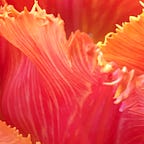Top 5 Essential Bee-Friendly Plants for Your Low-Maintenance Garden Nature Sanctuary
I wonder if you would love to make your outdoor space more pollinator friendly, but don’t know where to start? We’re all busy juggling many responsibilities, so we need gardening to be as simple as possible. With these clever, low-maintenance planting choices you will have more time to relax and enjoy your garden, safe in the knowledge that you are giving the bees a helping hand too.
1. Alliums
Alliums are super-easy bulbs to grow. There are many varieties in loads of different colours and forms, ranging from deep fuchsia through pale pink to purest white. They glitter and sparkle like garden fireworks, adding height and structure wherever you choose to plant them.
Bees will gather on their star shaped petals and feast on the rich pollen.
Plant your allium bulbs in autumn (fall). You can plant them in pockets around the garden or in large containers, then forget about them until the strap-like foliage appears in spring. They prefer a sunny spot.
2. Hardy Geraniums
Hardy geraniums are some of the hardest working and lowest maintenance plants you can grow in your garden.
They have incredibly long flowering seasons which is crucial in a low-maintenance garden.
You can choose from a huge range of colours from vibrant magentas to rich indigo purples. Or, if you prefer a more delicate colour palette, you could consider glistening white or shell pink. You can choose short geraniums or go for tall ones.
All hardy perennial geraniums are bee-friendly and simple to grow.
Plant geraniums in sun or partial shade. They work well in containers or in a flower bed. Some will provide good ground cover and suppress weeds, so check the plant labels if this would be useful in your garden.
To prolong a geranium’s flowering season, snip off any dead flowers. Some people suggest chopping the whole plant back to a third of its size after flowering to promote a new flush of flowers.
3. Sweet Cherry
Now, I know that many people will think that a fruit tree will be too big and therefore not possible to grow in their garden. I did too, until a few years ago.
Our garden is 3m x 5m and we now have five fruit trees, all growing in containers, including the cherry tree pictured above.
So, I urge you to consider buying a fruit tree to plant. The sweetly scented blossoms are spectacular in springtime, the bees will gorge themselves on the plentiful nectar and you will have handfuls of pure, chemical-free fruit to pick — this truly is the best of gardening.
I bought this cherry tree because it was an absolute bargain at my local garden centre. I struggled to fit it into my tiny car and I wasn’t sure if I could grow it in a container, but I wanted to try.
I planted it in a 40cm diameter pot and it is now around 2m tall. It would grow taller, but the size of the pot restricts the rootball; this is fine in my tiny garden because I wouldn’t want a taller tree.
Five years later and it’s thriving, giving handfuls and handfuls of lusciously sweet fruit.
This cherry tree gave fruit in the second year that we had it. Every year since, our cherry crop has steadily increased, with no special care, just watering it in hot and dry spells.
Any birds in your garden might be interested in the glowing jewels of fruit, so you will need to keep an eye on your cherry tree!
4. Borage
Borage is one of the easiest plants to grow from seed. The gorgeous lavender blue spires are bee magnets and it flowers for months at a time.
We even have stray posies that flower in the middle of winter, like this one which has self-seeded outside our front door.
Borage became trendy a few years ago with the rise of edible flowers in drinks and salads.
It is a delicious addition to a gin and tonic — you can freeze each star shaped flower in ice and it gives a subtle and refreshing cucumber lift to your drink.
Sow borage seeds in standard compost in a pot in early spring. Then set on a sunny windowsill until they have established. Once the weather is a bit warmer, place them outside. They will do fine growing in their container, or you could pop them in the ground so they can spread out more.
5. Honeysuckle
Vertical gardening is a huge bonus when you have a small outdoor space. It’s easy to forget about growing plants upwards, but it is a great way for you to maximise nectar-rich flowers for your local bees.
There are many varieties of honeysuckle, some are even winter flowering. All can be grown in pots, which will also tame their tendency to scramble too high.
Honeysuckles are all deliciously fragrant and will bathe your garden in a rich cloud of scent on warm summer nights.
Bees will flock to enjoy the nectar from the delicate trumpet shaped flowers.
Honeysuckles are low-maintenance plants which will do well in sun or partial shade. They will benefit from the occasional haircut to maximise flowers and stop them becoming too shaggy and unruly.
So, there we have it. 5 bee friendly plants for your low-maintenance garden.
Whatever your limitations with time and space, I believe that you can easily begin to attract more wonderful bees to your garden. They will flourish, the planet will benefit and just think how great you will feel, looking out at your little nature sanctuary.
